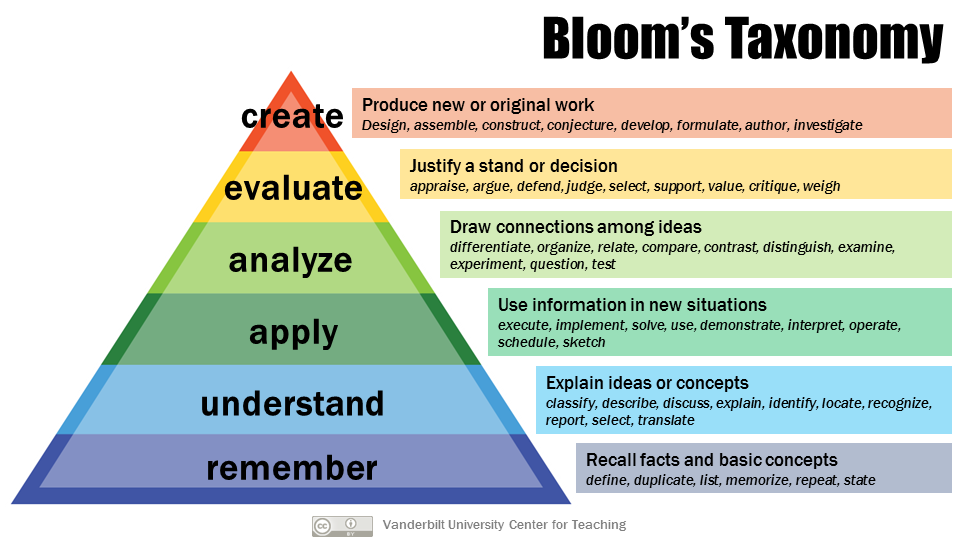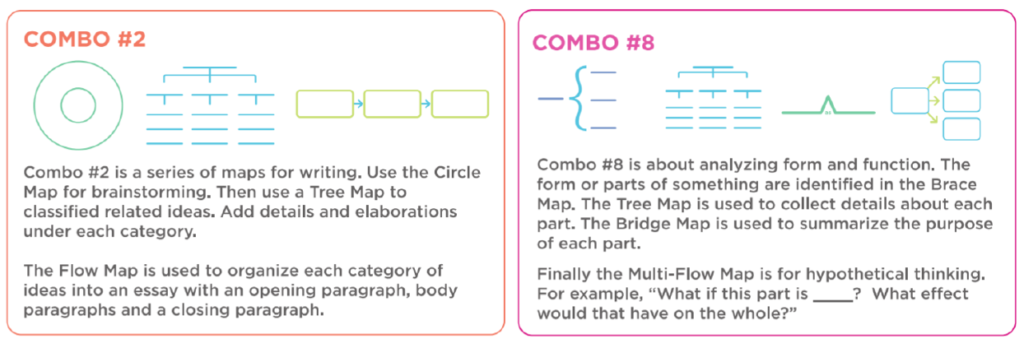Can You Take Me Higher: Building Higher-Order Thinking Skills
JULY 15, 2019
Promoting "higher-order thinking skills" (HOTS) is almost universally acknowledged to be an important educational goal. But what do we really mean when we talk about higher-order thinking skills, and why do they matter? In the last blog in our "Brain-Based Learning" series, we're going to take a closer look at higher-order thinking and how we can support the development of these important cognitive skills.
Preparing Students for the Information Age
Over the last 150 years, our economy has undergone massive shifts, from an agrarian economy, to the Industrial Age, to the Post-Industrial Age of mass manufacturing. With each shift, the demands and expectations on students and the workforce have changed.
Now, we are deep in the Information Age, also known as the Knowledge Economy. And the demands on our students are greater than ever.
Today's students are entering a workforce where opportunities for unskilled labor are shrinking and the economic divide between skilled and unskilled workers has grown into a chasm. Automation and globalization have shrunk the manufacturing sector, once a reliable source of well-paying jobs, from 24% of the U.S. workforce in 1960 to just 8% in 2016. The jobs that remain typically require much higher literacy, problem solving, and critical thinking skills than were expected for the average worker a generation ago. Similar shifts are happening across other sectors of the economy.
The majority of the jobs of tomorrow—and most especially those that pay a living wage—will require students to apply higher-order thinking skills.
Defining Higher-Order Thinking: Bloom and Beyond
What exactly do we mean by "higher order thinking skills"? "HOTS", as they are sometimes called, are complex cognitive skills involving analysis, evaluation, synthesis, judgment, and creativity. Higher-order thinking requires students to go beyond simply memorizing facts. Instead, students are expected to do something with the information they are learning. This may mean identifying relationships between ideas, combining and applying concepts to solve a novel problem, or generating entirely new ideas based on what they have learned.
Benjamin Bloom was among the first to codify the idea of "lower" and "higher" thinking skills. First developed in the 1950s, Bloom's Taxonomy is still widely recognized by educators today. In this framework, skills are thought to build upon each other, starting with the most basic skills (recall and comprehension), progressing through more complex skills (application and analysis), and culminating with higher-order thinking skills such as synthesis, evaluation and creation. The pyramid has been revised over the years, but the basic idea remains the same.
 Source:
Source:
Vanderbilt University Center for Teaching
Other researchers have developed newer ways to think about higher-order thinking skills. In A Taxonomy for Teaching, Learning, and Assessing, the authors outline four levels of cognition:
- Factual Knowledge: Terminology, details, and elements.
- Conceptual Knowledge: Classification and categories; principles and generalizations; theories, models, and structures.
- Procedural Knowledge: Skills, applications, subject-specific techniques and methods.
- Metacognitive Knowledge: Strategy, context, conditions, awareness of cognitive tasks, self-knowledge and assessment.
Creativity, Critical Thinking and 21st-Century Skills
However you define higher-order thinking, the goal is to get students to move beyond simply recalling facts on demand and start using knowledge in complex ways.
Higher-order thinking is an important component of 21st Century Skills. These are the skills that are most in-demand in the Knowledge Economy. They include:
- Learning skills: Critical thinking, creativity, collaboration, and communication.
- Literacy skills: Information literacy, media literacy, and technology literacy.
- Life skills: Flexibility, leadership, initiative, productivity, and social skills.
All of these skills are grounded in higher-order thinking. For example, media literacy requires students to be able to evaluate sources of information, determine which sources and facts are credible, and put new information into context with other information. Creativity is rooted in the ability to synthesize information from different sources, evaluate different ideas, and combine concepts in new ways. 21st Century Skills are, fundamentally, different ways of combining and expressing higher-order thinking skills.
Developing these skills, including the ability to combine different styles of thinking and determine which cognitive skills are most appropriate for the task at hand, will prepare students for the demands of the 21st-Century workplace. It will also give them the tools they need to become lifelong learners, participate fully as citizens in our democracy, make positive connections with others, and reach their personal goals.
Thinking on Multiple Levels
Higher-order thinking is grounded in the ability to use and combine a variety of cognitive strategies flexibly and appropriately. Students must be able to:
- recognize the thinking skills appropriate for the task at hand;
- activate the appropriate cognitive processes, and
- combine these cognitive processes to engage with concepts on multiple levels
Thinking Maps is uniquely suited to developing these skills. As students become proficient in using the eight Maps and activating the cognitive skills behind them, they also develop the metacognitive skills necessary to recognize the kinds of thinking needed for various learning tasks. Combining Maps allows students to engage with content on multiple levels, deliberately moving from basic understanding (defining, describing) to more complex forms of thinking (analyzing, categorizing, synthesizing, and creating).

Students also learn to use "Frames of Reference" when creating their Maps, which are supported by guiding questions. These "framing" questions encourage students to think about sources of information, context, and points of view. They are also used to stimulate metacognition and help students evaluate their learning process and outcomes.
Used in this way, the Maps provide a springboard for cognition, metacognition, critical thinking, and creativity—all of the skills students need for success in college, career, and beyond.
Download Our White Paper for More!
Want to know more about brain-based learning? Download our white paper: The Building Blocks of Brain-Based Learning—The Research Base for Thinking Maps. You'll learn:
- How the brain processes, filters, stores, and retrieves information
- The six building blocks of brain-based learning
- How Thinking Maps taps into the way we are already wired to learn
Continue Reading
March 19, 2025
When we align instruction with the way the brain prefers to receive information, we can reduce the “cognitive load” of learning and help students maximize understanding, retention and recall. These six brain-based strategies can help educators improve learning outcomes and make learning more fun and efficient.
January 15, 2025
Rather than simply memorizing facts, students with strong critical thinking skills learn how to connect ideas, identify patterns, and make informed decisions—key abilities in a rapidly changing world. These higher-order thinking skills at the core of critical thinking push students beyond rote learning to actively engage with content. In fact, closing the critical thinking gap is one of the most effective ways to accelerate learning for students who are struggling to learn grade-level content.
May 16, 2024
Support student mastery of the Core Ideas and Crosscutting Concepts in the NGSS with Thinking Maps.
April 15, 2024
Scientific thinking empowers students to ask good questions about the world around them, become flexible and adaptable problem solvers, and engage in effective decision making in a variety of domains. Thinking Maps can help teachers nurture a scientific mindset in students and support mastery of important STEM skills and content.